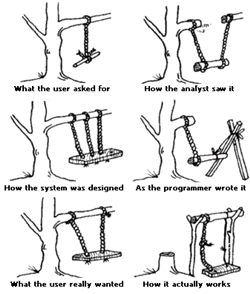Okay, now that I got the link-bait title out of the way, I am going to rant just a little bit. I imagine that I’m like most of you and I think that some flavor of agile (little a) is really the best way to develop software.
I think that collaborating with the business and getting things in front of them as soon as possible so that you can make changes to it as you go is a very valuable model. I am also very much for the short release cycles that most agile shops prefer.
What I despise, however, is what I call “Agile as Snake Oil”. There are a lot of disreputable companies that are putting the word out there that all you have to do is hire them and they can “sprinkle a little agile” on your project or your company and you will magically get everything you want.
 They crow that Agile means that you can not make up your mind on what you want until the last minute because Agile Developers have to do what you say and are bound by the Laws of Agile to always change the software for the client. They want their cake and to eat it, too. They want all of the spec changes and none of the timeline changes or compromises.
They crow that Agile means that you can not make up your mind on what you want until the last minute because Agile Developers have to do what you say and are bound by the Laws of Agile to always change the software for the client. They want their cake and to eat it, too. They want all of the spec changes and none of the timeline changes or compromises.
Oh, that they would actually read something like Robert C. Martin’s book, Agile Principles, Patterns, and Practices. I’ll tell you what, I think that if people only read the end of the book, where Uncle Bob tells a tale of two cities, a project where the team does a “traditional waterfall approach” and the same project where the team practices an “agile approach”, it would make a world of difference.
As you can imagine, the waterfall approach ends in disaster, with stress and hard feelings abounding. In contrast, people are satisfied – almost happy – with the agile approach. The HUGE takeaway from the agile story, however, is that it was not a 100% win for either side. They did not hit their original deadline with 100% functionality. Features had to be traded in if the timelines could not move. However, the business stakeholders were the ones who went ahead and made that call.
I covered this in my last “Agile” post over a year ago, but I think that it bears repeating. Every agile project should do these steps
- Gather requirements
- Estimate requirements to determine length of project
- Work requirements in iterations
- Gauge velocity in coding requirements against estimate
- Determine whether your velocity requires you to either cut requirements or extend timelines
- Lather, rinse, repeat
Developers always get a bad rap for number 5 and it is always largely based on our lack of skill at number 2. Estimating is something that developers really should improve on, however, the business needs to understand two major things. Number 1, those timeline estimates are based on developers being able to work on the project at “perfect world” capacity – meaning 75-80% of their time. If developers are interrupted with conflicting priorities, original estimates and timelines are null and void.
Second of all, those who live in glass houses should not throw stones. If the original requirements are so ill-planned that they need to be drastically refined or changed, then developers should be able to refine and change estimates, too, since they are basically working on a different project than the one they started with.
There are obviously no perfect people in this world, so that means that there is no perfect system. Any system will invariably break down because of those imperfect people going around and “being human”. That being said, the best way to get to nirvana is to act like the participants in Uncle Bob’s Agile Story and rely on the two C’s, “communication and compromise”.
Compromising is the original agile. Be retro.
 I was recently reading through some of my backlog of
I was recently reading through some of my backlog of